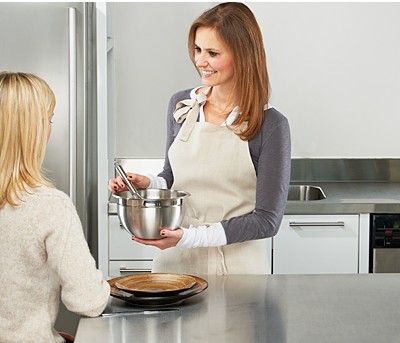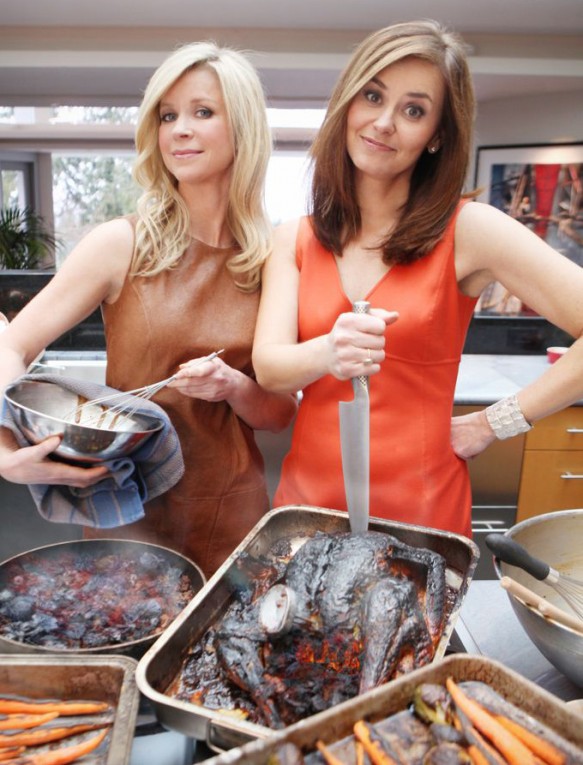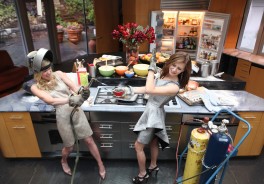
Saucepans
Available in a wide variety of materials, shapes, and sizes, the type of saucepan you buy depends on what you plan to use it for. We find out how material and construction can make a difference.
The Basics
-
Saucepans are the workhorse of the kitchen, used for everything from heating soups, boiling pasta, making rice, and simmering stews and chili.
-
You can buy lightweight or heavy-duty, commercial-style pots in a wide variety of materials, including:
-
Anodized aluminum: an excellent conductor of heat and relatively lightweight and durable, but it’s easily stained and not dishwasher-safe.
-
Enamel-coated aluminum: typically found in low-end product lines and often doesn’t heat evenly.
-
Stainless steel: can go in the dishwasher, but conducts and retains heat poorly. Often layered over aluminum, or has a bottom with a copper or aluminum core.
-
Cast-iron pots: slow to heat and cool but handle high temperatures well. Great for stews or Cajun-style blackening, these pots are super durable and long-lasting if you care for them well.
-
Copper: heats and cools quickly and is ideal for meticulous temperature control. Copper reacts with acidic foods (e.g. tomatoes) so it’s usually lined with stainless steel or tin, which wears out over time. Copper pots are often very expensive.
-
Tempered glass (e.g. Pyrex): breaks easily and cooks unevenly. The advantages are that it can go directly from the stove into the oven, freezer, broiler, or microwave, and even onto the table.
-
-
The most versatile materials for pots and pans are aluminum and stainless steel. Aluminum, when it’s sufficiently heavy-gauge, heats quickly and evenly.
-
Most people need at least two sizes to cook with: a smaller pot (e.g. 1-2 quarts) and a larger pot (3-4 quarts).
-
Even heat distribution is the most important thing in a saucepan. Look for a perfectly flat bottom so that heat can transfer easily across the bottom and up the sides.
-
Pot handles are typically made of metal, plastic, or wood. Wood is more heat-resistant so it won’t heat up as quickly on the stove. However, you can’t put a wooden-handled saucepan in the oven like you can a metal one. (Nor a plastic-handled one for that matter either!)
-
Ensure the handle is attached securely with rivets or screws. Some handles are also welded.
Other Considerations
-
Non-stick pots and pans definitely are an advantage, but shouldn’t be used with metal utensils or on very high heat.
-
Some manufacturers use a thicker non-stick coating or include ceramic titanium coating for more durability.
-
Most non-stick pans aren’t dishwasher-safe, but they’re pretty easy to clean.
-
-
On the other hand, most uncoated cookware is dishwasher-safe, can handle metal utensils, and is good for browning or creating a sticky base after sautéing in order to make a tasty sauce.
TEST CRITERIA
Making candied treats requires heating sugar to extremely high temperatures without burning it. We tested some saucepans to see which one transfers heat the most evenly.
|
. . | Amazon.ca |
Amazon.com |
|
. . | – | Amazon.com |
|
. . | Amazon.ca |
Amazon.com |
|
. . | Amazon.ca |
Amazon.com |
|
. . | Amazon.ca |
Amazon.com |
|
|||
Heat Distribution Test
We heated each pot with a heat source and then measured the distribution using a thermal scanner.
-
The Faberware had a very big hot spot in the centre, which is where your food would typically burn.
-
The Paderno has an aluminum disc embedded in its base. The heat distribution was even, but showed a few small, minor hot spots.
-
The Cuisinart heat measurement was somewhat even, but not as good as the All-Clad.
-
The All-Clad had the best overall heat distribution, showing an even reading across its bottom, with no hot spots.
Durability Test
We did an extreme durability test and catapulted all of the pots across a warehouse room. If they can survive that, they can survive our cooking!
-
A few of the pots were understandably dented.
-
The handles of the Calphalon and the Paderno loosened, but all stayed intact.
-
The Cuisinart, Farberware, and All-Clad appeared durable and solid.
OUR TOP PICK
The All-Clad was our overall favourite because it was the best at distributing heat, which makes for more effective cooking. Even though it has a hefty price tag, we think it’s worth it since it’s a pot you’ll have for a lifetime. And remember, pots and pans often go on sale, so keep an eye out for a good deal!















